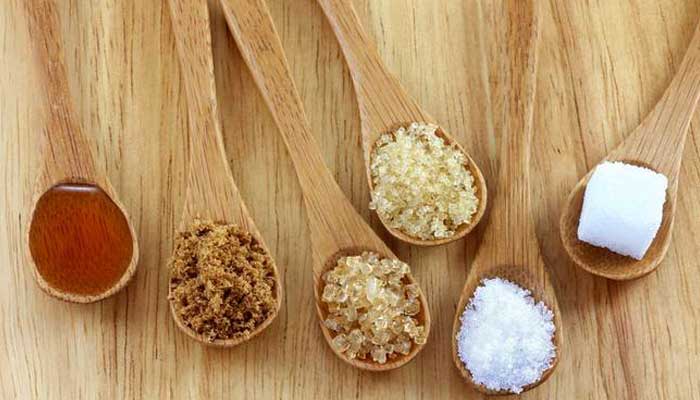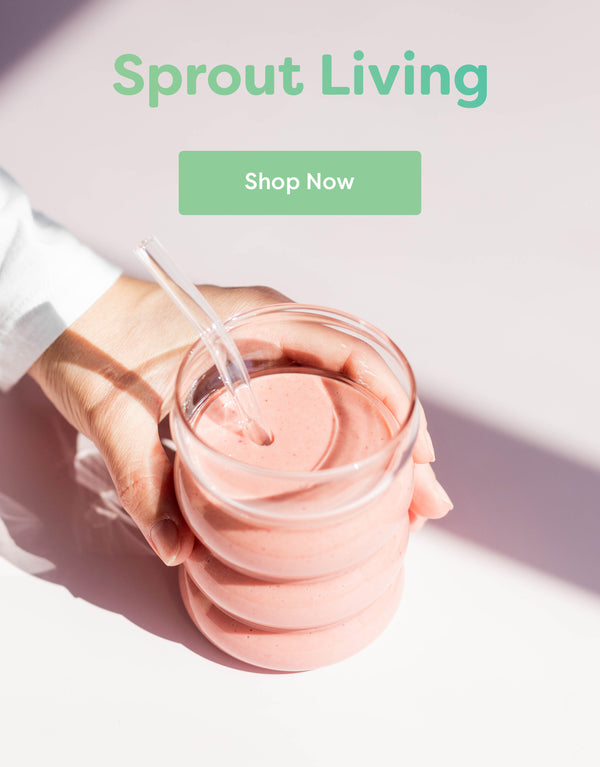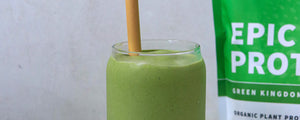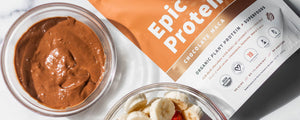
Comparison of Sweeteners
Walk into any supermarket and you will be bombarded with a wide array of food labels stating that their products are “low-sugar,” “naturally sweetened,” or “sugar-free.” But what these labels actually mean is a completely different thing. Most of us have heard horror stories about what has happened to lab rats after being fed artificial sweeteners, but we are also told that consuming too much table sugar can be detrimental to our health. So where is the happy medium? In this article, we’ll investigate the different types of sugar – from their origins to their possible benefits and dangers – and more importantly, how to incorporate sugar into your diet. But first, it’s important to understand how the body takes in sugar and how sugar affects our energy levels.
As the body digests food, sugars (including lactose, sucrose, starches and other carbohydrates) break down into simple sugars, which are then able to move through the blood stream to the cells of the body. In this way, these simple sugars provide energy to the body and allow the body to form proteins. To learn more about the different types of proteins, how they affect the body and how proteins are created, read the article What Are Essential and Non-Essential Amino Acids?
The glycemic index measures effects of the carbohydrates on the body and blood stream. Foods that rank high on the glycemic index cause the blood sugar to increase rapidly, which often leads to a rush of energy and a steep increase in insulin levels – and is consequently followed by a crash in energy. This is especially dangerous for diabetics, who are susceptible to spikes in blood sugar and insulin levels, meaning that people who suffer from diabetes must be very careful about where their foods rank on the glycemic index. The graph below depicts this relationship: Too much sugar in the diet of any person can lead to health problems and weight gain. It’s especially important to limit the amount of added sugar in your diet – meaning, the amount of sugar that has been added to your food or drinks; these sugars are not occurring naturally. Maltose in grains, lactose in milk and fructose in fruit are all naturally-occurring sugars. The American Heart Association advises that females ingest no more than 100 calories/25 grams of added sugar and males consume no more than 150 calories/38 grams of added sugar each day.
Too much sugar in the diet of any person can lead to health problems and weight gain. It’s especially important to limit the amount of added sugar in your diet – meaning, the amount of sugar that has been added to your food or drinks; these sugars are not occurring naturally. Maltose in grains, lactose in milk and fructose in fruit are all naturally-occurring sugars. The American Heart Association advises that females ingest no more than 100 calories/25 grams of added sugar and males consume no more than 150 calories/38 grams of added sugar each day.
Photo Credit: fromthegrapevine.com
Sources:
The glycemic index measures effects of the carbohydrates on the body and blood stream. Foods that rank high on the glycemic index cause the blood sugar to increase rapidly, which often leads to a rush of energy and a steep increase in insulin levels – and is consequently followed by a crash in energy. This is especially dangerous for diabetics, who are susceptible to spikes in blood sugar and insulin levels, meaning that people who suffer from diabetes must be very careful about where their foods rank on the glycemic index. The graph below depicts this relationship:
 Too much sugar in the diet of any person can lead to health problems and weight gain. It’s especially important to limit the amount of added sugar in your diet – meaning, the amount of sugar that has been added to your food or drinks; these sugars are not occurring naturally. Maltose in grains, lactose in milk and fructose in fruit are all naturally-occurring sugars. The American Heart Association advises that females ingest no more than 100 calories/25 grams of added sugar and males consume no more than 150 calories/38 grams of added sugar each day.
Too much sugar in the diet of any person can lead to health problems and weight gain. It’s especially important to limit the amount of added sugar in your diet – meaning, the amount of sugar that has been added to your food or drinks; these sugars are not occurring naturally. Maltose in grains, lactose in milk and fructose in fruit are all naturally-occurring sugars. The American Heart Association advises that females ingest no more than 100 calories/25 grams of added sugar and males consume no more than 150 calories/38 grams of added sugar each day.
First, let's examine the most common one: granulated table sugar, or sucrose
This sugar comes from sugar beets or sugar cane that has gone through processing and has been stripped of the additional nutrients that are available in some other sweeteners. Each gram contains four calories of simple carbohydrates that can be turned into energy by the body. People in today’s society consume much more refined sugar than our ancestors, which is part of the cause of the obesity epidemic in our world. Obesity is linked to many serious health issues that are growing concerns in modern society.So what are our alternatives to table sugar?
Honey
Many people turn to honey to sweeten their food and drinks. Honey, produced naturally by bees, contains small amounts of vitamins and minerals that are healthy for the body, and studies suggest that the consumption of local honey may help people with allergies deal better with hay fever and other environment-caused allergies. Additionally, it is thought that honey may not affect blood sugar levels as quickly as sucrose. However, honey is high in calories and should be used sparingly in a balanced diet.Coconut Sugar
One type of sweet alternative to consider is coconut sugar. Coconut sugar is the sap of the coconut palm that was been boiled and dehydrated. It is generally more costly than refined or granulated sugar but offers about the same number of calories and carbohydrates. Coconut sugar contains healthy nutrients including vitamin C, calcium, zinc, potassium, phosphorous, iron, copper and magnesium, as well as various phytonutrients and antioxidants. Studies have shown that this type of sweetener may have less of an effect on your blood sugar than other types of sugars. While regular granulated sugar ranks around 60-75 on the glycemic index, coconut sugar ranks low at 35.Stevia
Stevia is another commonly used sweetener. Extracted from the stevia plant, which is found in South America, this sweetener is calorie-free and around 300 times sweeter than table sugar. It has very little aftertaste and no effect on blood sugar – this means that stevia may be a good choice for diabetics. In 1991, the Food and Drug Administration (FDA) issued a ban on stevia due to lack of scientific evidence of its safety, but this ban was eventually overturned and stevia was given GRA status (Generally Recognized as Safe) in 2008 by the FDA, and in 2011 by the European Union. Hundreds of popular products worldwide are sweetened with stevia. Stevia is also thought to have various health benefits, including controlling high blood pressure and insulin levels. While the use of stevia is relatively new on the food scene (compared to table sugar, for example), it certainly seems like a promising alternative sweetener for people watching their sugar intake and diabetics.Sucralose
Sucralose, more commonly known as Splenda, is a zero-calorie sweetener that is not sensitive to heat, and is therefore used often in baking. Sucralose is created by replacing three hydrogen-oxygen groups on the sugar molecule with three chlorine atoms. The end product is a sweetener that is 600 times sweeter than table sugar. Studies have not found sucralose to be carcinogenic, but more scientific research needs to be done to have a truly conclusive answer.Xylitol
Many products worldwide also contain xylitol, a sweetener found in fruits and vegetables that is also produced by the human body during carbohydrate metabolism. Because its chemical structure is similar to both that of sugar and alcohol, xylitol is actually classified as a sugar alcohol (similar to mannitol and sorbitol). Xylitol has 40% less calories than table sugar and is commonly used in pharmaceuticals, oral health products, beverages and candies worldwide.Aspartame
Aspartame, used in no-calorie sweeteners like Equal and NutraSweet, is the most studied artificial sweetener. It is commonly found in chewing gum, yogurt, beverages and cough drops. Aspartame is often accused of causing grave danger to humans, especially since a study in the 1980s that linked brain tumors to the consumption of aspartame in lab rats – but further studies show no such correlation. The FDA has declared the moderate intake of aspartame to be safe; however, caution is advised.High-Fructose Corn Syrup
High-fructose corn syrup is another sugar source that should be consumed only in moderation. Because this sweet processed syrup, made from corn, is cheaper than regular sucrose, and is used in thousands of commercial products worldwide, most frequently in soda pop, cereal and yogurt. Studies on whether high-fructose corn syrup is worse for the body than regular sucrose have been inconclusive. Obviously, there are myriad sources of sugar available to the average consumer – but everything from the most natural sugar to the most artificially processed form should be taken in moderation. So although some sweeteners offer more health benefits than others, the key is make sure to limit your sugar intake to prevent weight gain and other health issues.- Robert LaFelice, Life Extension Magazine, “Sweet As Sugar: Health Benefits of Stevia and Xylitol,” http://www.lifeextension.com/magazine/2014/2/sweet-as-sugar-health-benefits-of-stevia-and-xylitol/page-01
- Andrea Cespedes, Livestrong.Com, “What Are the Benefits of Coconut Sugar,” http://www.livestrong.com/article/367337-what-are-the-benefits-of-coconut-sugar/






